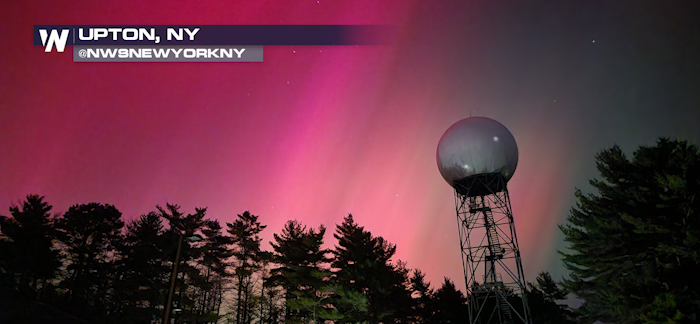Northern Lights Put On Dazzling Show Thursday Night
Thursday night will be a night many people will remember, and cherish, for the rest of their lives. The Northern Lights put on a brilliant display, wowing millions of people across the United States.
 A strong geomagnetic storm began to impact Earth on Thursday afternoon, East coast time, and some wondered if it would last long enough until nightfall and allow residents of the U.S. to view it. Well, it did last.
A strong geomagnetic storm began to impact Earth on Thursday afternoon, East coast time, and some wondered if it would last long enough until nightfall and allow residents of the U.S. to view it. Well, it did last.
The Aurora Borealis was visible in New England, the Great Lakes, the mid-Atlantic, even down to the Gulf Coast states! That is the sign of a strong solar storm.
 Here are some additional pictures from across the states.
Here are some additional pictures from across the states.




 So, the big question is: Can we see it again? The answer to that is "Likely." We say that, because the show of the Northern Lights on Thursday night was the second time this week that we have had a show of the Aurora! There was another big solar event on Monday night, too.
So, the big question is: Can we see it again? The answer to that is "Likely." We say that, because the show of the Northern Lights on Thursday night was the second time this week that we have had a show of the Aurora! There was another big solar event on Monday night, too.
 The forecast for Friday night into Saturday morning, October 11th into the 12th, is for the Aurora to not be as intense as it was Thursday night. It could still be visible on the horizon from Seattle to Sioux Falls to Detroit and to Portland, Maine.
The forecast for Friday night into Saturday morning, October 11th into the 12th, is for the Aurora to not be as intense as it was Thursday night. It could still be visible on the horizon from Seattle to Sioux Falls to Detroit and to Portland, Maine.
Thursday night's solar storm was rated a "G4" short for Geomagnetic Storm. That's classified as a severe solar storm. Think of the G scale as the EF scale for tornadoes, or the Saffir-Simpson scale for hurricanes. The range is 1 to 5, 5 being most intense. Friday night, the forecast is for a G2.
The aurora will still be visible as this strong solar event continues. How about cloud cover?
 The best viewing appears to be in northern Michigan, northern Minnesota, and northern Montana. Other states could get obscured by clouds.
The best viewing appears to be in northern Michigan, northern Minnesota, and northern Montana. Other states could get obscured by clouds.
If you have FOMO (Fear Of Missing Out) about the aurora, fret not. We are in a solar maximum cycle. More of these events will be likely through 2025.